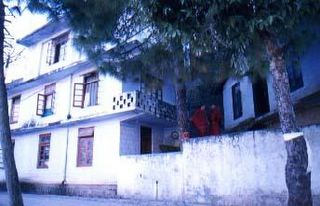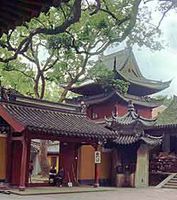Thi đua tẩm quất gây quỹ tạo niềm hy vọng cho nạn nhân sóng thần
25 February 2005
 Trung tâm Phật giáo sẽ tổ chức một buổi thi đua tẩm quất nhằm gây quỹ để trợ giúp cho nạn nhân của cơn sóng thần Tsunami vừa qua. Một số chuyên viên xoa bóp, chữa bệnh theo cách Yoga của nhóm Beyondhands, đã hợp tác để ủng hộ một dự án nhỏ trong vùng bị thiệt hại nặng nhất, Thái Lan. Đã có 10 chuyên gia thoa bóp góp sức làm việc ở trung tâm Phật giáo phía bắc Anh Quốc . Ông Julian Treble, người dựng nên nhóm Beyondhands, nói:” Một số người trong chúng tôi được huấn luyện ở Thái Lan, chúng tôi cảm thấy đã mang nợ và phải làm điều gì đó giúp ích cho những nạn nhân.” Số tiền gây quỹ sẽ tặng hết cho Ko Phra Tong, một trong những nơi thiệt hại khốc liệt nhất trong vùng. Ông Treble nói:”Hòn đão này thuộc về dân địa phương, không phải của chánh phủ và họ sanh sống nhờ vào tài nguyên của biển cả.” Cơ quan từ thiện sẽ tạo điều kiện cho dân địa phương muốn học nghành nghề mới. Kế họach này dụ trù kéo dài 20 năm, sẽ dựng trung tâm dạy lớp học cấp ba, và huấn nghệ cho người lớn để họ có thể tự phát triển nền kinh tế địa phương. Đây là bước đầu của nhiều dự án, mà hội từ thiện hy vọng sẽ thâu được 1.000 đến 2.000 đồng tiền Thụy sỹ trong mỗi dự án. Cô Rachel Edmondson, hội viên của Beyondhands, có người bạn tên Charlotte bị thiệt mạng trong vụ thiên tai vừa qua, cô đã được huấn luyện, làm việc trong vùng và những vùng lân cận trong vài năm qua có nói :” Nơi đây lúc nào cũng có một sự thân thiết đặc biệt đối với tôi, và cũng thật buồn khi nghĩ đến đây cũng là nơi mà tôi đã mất đi người bạn.” Chương trình tẩm quất này bắt đầu vào ngày mai, đồng thời sẽ có những lớp dạy Yoga, và hành thiền.
Trung tâm Phật giáo sẽ tổ chức một buổi thi đua tẩm quất nhằm gây quỹ để trợ giúp cho nạn nhân của cơn sóng thần Tsunami vừa qua. Một số chuyên viên xoa bóp, chữa bệnh theo cách Yoga của nhóm Beyondhands, đã hợp tác để ủng hộ một dự án nhỏ trong vùng bị thiệt hại nặng nhất, Thái Lan. Đã có 10 chuyên gia thoa bóp góp sức làm việc ở trung tâm Phật giáo phía bắc Anh Quốc . Ông Julian Treble, người dựng nên nhóm Beyondhands, nói:” Một số người trong chúng tôi được huấn luyện ở Thái Lan, chúng tôi cảm thấy đã mang nợ và phải làm điều gì đó giúp ích cho những nạn nhân.” Số tiền gây quỹ sẽ tặng hết cho Ko Phra Tong, một trong những nơi thiệt hại khốc liệt nhất trong vùng. Ông Treble nói:”Hòn đão này thuộc về dân địa phương, không phải của chánh phủ và họ sanh sống nhờ vào tài nguyên của biển cả.” Cơ quan từ thiện sẽ tạo điều kiện cho dân địa phương muốn học nghành nghề mới. Kế họach này dụ trù kéo dài 20 năm, sẽ dựng trung tâm dạy lớp học cấp ba, và huấn nghệ cho người lớn để họ có thể tự phát triển nền kinh tế địa phương. Đây là bước đầu của nhiều dự án, mà hội từ thiện hy vọng sẽ thâu được 1.000 đến 2.000 đồng tiền Thụy sỹ trong mỗi dự án. Cô Rachel Edmondson, hội viên của Beyondhands, có người bạn tên Charlotte bị thiệt mạng trong vụ thiên tai vừa qua, cô đã được huấn luyện, làm việc trong vùng và những vùng lân cận trong vài năm qua có nói :” Nơi đây lúc nào cũng có một sự thân thiết đặc biệt đối với tôi, và cũng thật buồn khi nghĩ đến đây cũng là nơi mà tôi đã mất đi người bạn.” Chương trình tẩm quất này bắt đầu vào ngày mai, đồng thời sẽ có những lớp dạy Yoga, và hành thiền.Khánh Văn lược dịch
A massage of hope for tsunami victims
By Jane MathewsHOLLOWAY'S Buddhist centre is to hold a massage marathon tomorrow to raise money for victims of the Asian tsunami. The Beyondhands group of yoga practitioners have joined forces to support small projects in the hardest hit areas of Thailand.And 10 masseurs will be on hand at the North London Buddhist Centre to raise money for their cause.Beyondhands founder Julian Treble said: "Some of us trained in Thailand and we feel like we owe it to the victims to give something back." The funds raised will go to Ko Phra Tong, one of the islands devastated by the disaster.Mr Treble said: "The island is owned by the locals, not the government and they've always earned their living from the sea. "They want to learn skills related to other trades and the charity aims to provide the facilities for them to do that."The 20-year programme will set up a secondary school and adult learning centre on the island to teach locals professional skills that will enable them to boost the island's economy.The facilities would also serve locals on the group of islands located around Ko Phra Tong.This is the first of a series of events planned by the charity which hopes to raise between £1,000 and £2,000 towards the appeal.Beyondhands member Rachel Edmondson lost her friend Charlotte in the disaster.Ms Edmondson, 24, worked and trained on islands around and including Koh Racha Yai for several years. She said: "It's always been a very special place for me and the fact that Charlotte was taken there makes it sad - but also all the more special."Ms Edmondson plans to set up a retreat on the island as part of the charity in memory of her friend.The massage marathon begins tomorrow at 10am and runs until 5.30pm, with massages starting at £25 for 30 minutes. There will also be various yoga and meditation classes between noon and 3pm, costing £5 for 45 minutes.For more information on both the event and the charity, go to www.beyondhands.com.
http://feeds.bignewsnetwork.com/redir.php?jid=5df32d617dcccf9d&cat=f97ff7b11934dbb6


